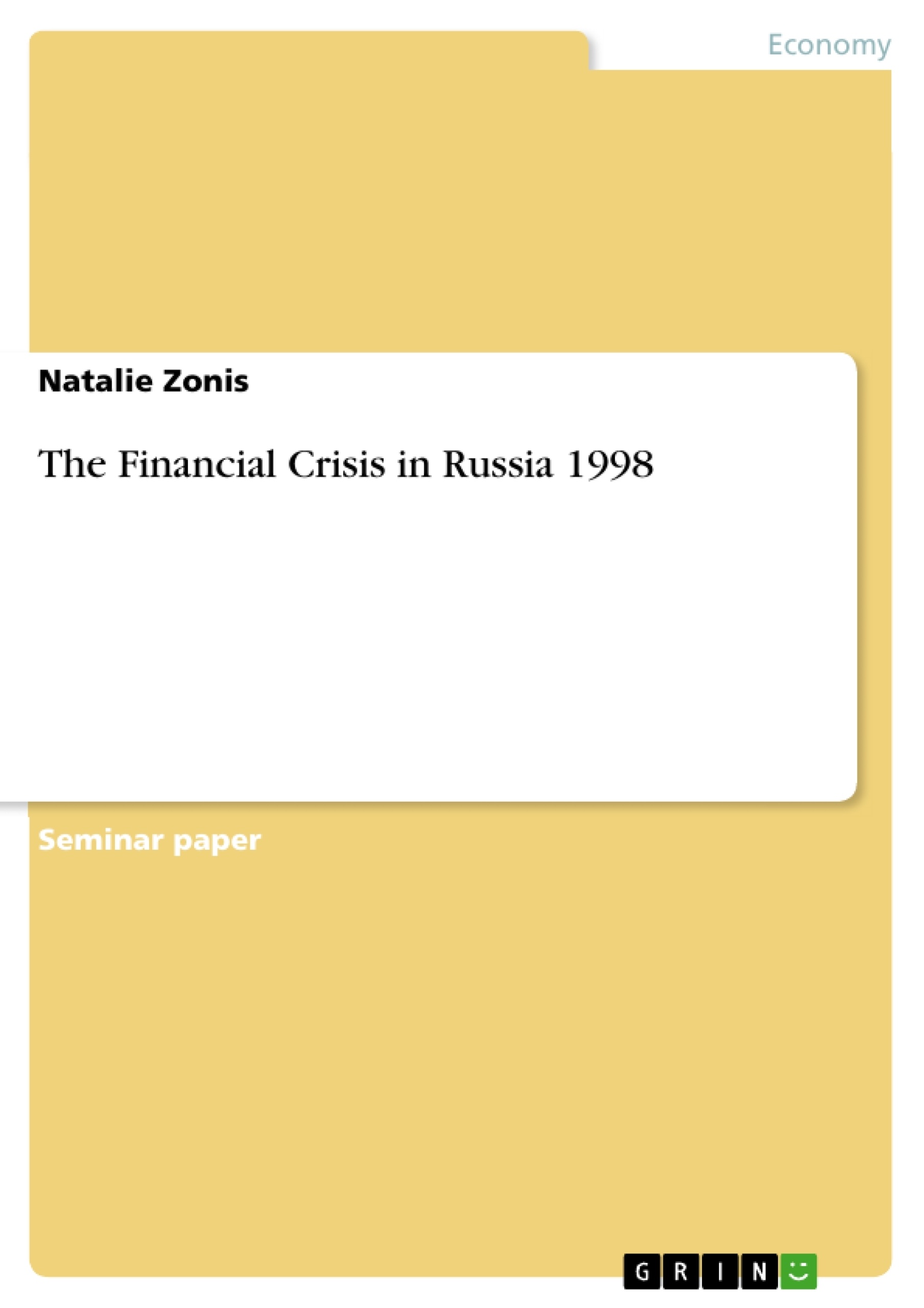Once again Russia’s positive economic development outlook has been thrown into question by the global financial crisis. The country has faced a whole lot of economic problems in the past months. Russians have withdrawn 290 billion Dollars from the country’s banks in fear of a financial collapse. At first sight on the past two years’ events on Russia’s financial market one may have had an impression of a „déjà-vu”:
Since August 2008: the Rouble has dropped about one third against the Euro over 30 percent and against the Dollar even more than 40 percent.2 The incoming foreign investment of 28 billion Dollars which broke all records right in the year before has now shrunk up to a few billion. The country’s two stock markets, the Russian Trading System (RTS) and the Moscow Interbank Currency Exchange (MICEX), have fallen 78 percent and 67 percent respectively since their highs in May 2008.3
It appears as some cynical 10th anniversary of 17th of August 1998: when the Russian Government announced the gradual devaluation of the Rouble, the default on domestic and foreign debts, and declared a moratorium on payment by Russian commercial banks to foreign creditors. So the Rouble has dropped to the Dollar more than 300percent in the following months and was six times lower only a year after.
At the outset this paper sets the currency crisis into the framework of the macroeconomic theory and provides a historical overview by putting the 1998 crisis into its timeframe and showing the impacts on the Russian economy. Furthermore the following questions are discussed: Why did the Rouble collapse? Was this a home-made crisis or was it caused by exogenous factors such as the foregone turmoil on Asia’s financial markets?
Finally it shows what the conditions under which an economy can become vulnerable to a currency crisis are, what are and the right and the wrong options to resolve it and the lessons learned.
Inhaltsverzeichnis (Table of Contents)
- 1. Introduction
- 2. A Currency Crisis in the Macroeconomic Theory
- 3. History of the Russian Default
- 3.1. Optimism and Reform...
- 3.2. Virtual Economy, Revenue, Investment, and Debt
- 3.3. The Asian Crisis
- 3.4. Government, Risk, and Expectations
- 3.5. Liquidity, Monetary Policy, and Fiscal Policy
- 3.6. Default and Devaluation
- 3.7. The Aftermath
- 4. Why Did the Rouble Collapse?
- 5. Lessons Learned
- 6. Conclusion
- 7. References
Zielsetzung und Themenschwerpunkte (Objectives and Key Themes)
This paper examines the Russian financial crisis of 1998, placing it within the context of macroeconomic theory. It explores the historical development of the crisis, analyzing the underlying causes and the impact on the Russian economy. Additionally, the paper investigates why the Ruble collapsed and whether the crisis was internally generated or a consequence of external factors such as the Asian financial turmoil.
- Currency crises within the framework of macroeconomic theory
- The historical background and development of the Russian financial crisis
- The causes and consequences of the Ruble's collapse
- The role of external factors, particularly the Asian financial crisis
- Lessons learned from the crisis and the conditions that can lead to economic vulnerability
Zusammenfassung der Kapitel (Chapter Summaries)
- Chapter 1: Introduction This chapter introduces the Russian financial crisis of 1998 and its impact on the country's economic development. It highlights the recent events on the Russian financial market, particularly the decline of the Ruble and the shrinking foreign investment, drawing parallels to the 1998 default. The chapter lays out the key questions addressed in the paper, including the causes of the Ruble's collapse and the role of external factors.
- Chapter 2: A Currency Crisis in the Macroeconomic Theory This chapter defines currency crises as speculative attacks on a country's currency, leading to rapid depreciation of the exchange rate. It classifies currency crises into first-, second-, and third-generation models, each with its own theoretical explanation. The first-generation models attribute crises to unsustainable fiscal policies and the fear of a fixed exchange rate collapse. The second-generation models emphasize the role of self-fulfilling prophecies, where investors attack a currency based on their expectation of other investors doing the same. The third-generation models explore the real economic effects of crises, considering factors such as government guarantees, liquidity exposure, firm balance sheets, and capital flows.
- Chapter 3: History of the Russian Default This chapter provides a historical overview of the Russian default, analyzing its development and the events leading up to the crisis. It explores the period of optimism and reform, the emergence of a virtual economy, and the impact of the Asian crisis. The chapter also examines the role of government policies, risk perception, and investor expectations in contributing to the crisis.
Schlüsselwörter (Keywords)
This paper focuses on key concepts such as currency crises, macroeconomic theory, Russian financial crisis, Ruble devaluation, speculative attacks, fiscal policy, monetary policy, Asian financial crisis, and economic vulnerability. It explores the theoretical framework of currency crises, investigates the historical context of the Russian default, and analyzes the factors contributing to the Ruble's collapse.
- Quote paper
- Natalie Zonis (Author), 2010, The Financial Crisis in Russia 1998, Munich, GRIN Verlag, https://www.grin.com/document/164881




